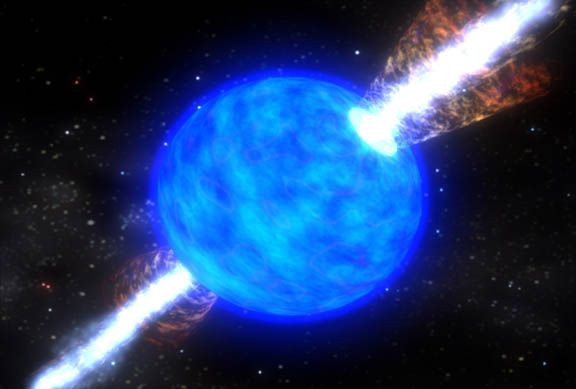Mysterious Supernova-Like ‘Transient’ Spotted 200-Million-Light-Years From Earth, Astronomers Baffled

A group of astronomers recently detected a mysterious transient — a bright flash of light that looks like a result of a stellar explosion but carries very different characteristics.
The mysterious flash was spotted on June 16 during routine sky observations conducted by researchers working for the NASA-funded ATLAS survey. The project, developed by the University of Hawaii, aims to detect near-Earth objects well before they come within the vicinity of our planet but also focuses cosmic transients from time to time.
Normally, observations like these are related to supernovae or the events in which a massive star explodes and releases energy, but this particular flash of light was different. It kept getting brighter and became nearly ten times brighter than a supernova in a matter of three days. In contrast, standard transients arising from normal supernovae take at least a few weeks to reach their peak level of brightness.
Stephen Smartt, the lead researcher behind the ATLAS survey, was surprised to witness the mysterious object and reported the findings on the Astronomers Telegram, an online portal to report interesting cosmic observations. "I've never seen anything like this before in the local universe," Smartt told the Washington Post.
Over the next week, the finding, which is now being called AT2018cow or just “the cow”, drew immediate attention from the scientific community. Astronomers working at observatories in different parts of the globe started taking observations of the object in the quest to determine its exact source.
The object appeared so bright that Smartt thought it might be located somewhere in our galaxy itself. However, the opinion changed when follow-up observations revealed more features of the flash along with its location in a galaxy called CGCG 137-068 — some 200-million-light-years away from Earth.
Scientists also studied the characteristics of the transient and found it appeared incredibly bright in all wavelengths, be it X-ray or radio. This further indicates that the object in question is different from a standard supernova.
Normal stellar explosions emit light with special spectral signs or absorption lines produced by certain elements that absorb the wavelength. "This does look like it is quite a rare object," Smartt told the Post. "Just the fact that it's detected over all these wavelengths leaves a lot of rich physics to understand."
Some think the object could be a Type 1c supernova, a star that underwent core-collapse with its outer envelope of hydrogen or helium, but, what's behind the exact source of this transient still remains unknown. Its brightness has already started decreasing, which means after some time, it won’t be possible to take further observations until another case of this kind is detected in the cosmos. It is also worth noting that the findings are not yet published in any peer-reviewed journal.
© Copyright IBTimes 2025. All rights reserved.





















